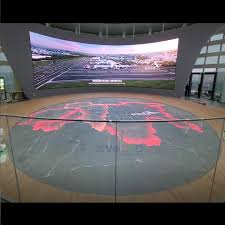When creating modern applications, understanding the basics of application design and development is essential. From understanding the different types of designs to developing an effective application, here’s everything you need to understand about designing and building applications.
What Is Application Design and Development?
Application design and development involves creating software that can meet the need of users. The goal is to build software that will be used by individuals, organizations or systems to satisfy a certain purpose. This type of software development needs a great deal of technical knowledge and knowing how users interact with the system.
The Different Types of Application Designs
Applications are designed with different methodologies. These approaches vary depending on the team working on the design project and any shared objectives set for the task. There are three main approaches: Waterfall Model, Iterative Model, and Agile Model.
The Waterfall model is based on sequential phases; each phase is completed before moving on to the next. The Iterative model allows for design changes throughout the process rather than relying on rigid planning upfront. Finally, Agile Model focuses on using short sprints with clear goals attached to complete specific tasks, increasing speed and efficiency when designing applications.
Understanding the Design Process
Creating a successful application requires a great deal of thought and attention during its design process for it to be effective once completed – so it’s important to understand how they work first-handly. It all begins with understanding user needs; this ensures that whatever is being created suits their requirements in terms of function and formality. Once these considerations have been made, you can move on to deciding what platform you wish your application to run on or better yet, explore if it should exist across multiple platforms at once (e.g., web vs mobile). Other things to consider throughout are usability principles such as visibility & control while also ensuring you keep an eye out for potential technical limitations within your chosen environment too; this will all help you produce an intuitive experience for users without making any false promises in terms of features or usability for that matter!
Developing an Effective Application
Once all user needs have been identified it’s time to start developing your application – i.e., writing code! Typically development teams use languages like Javascript or HTML 5, but nowadays, cross-platform frameworks also exist which provide quick ways of producing applications across multiple devices (iPad XCode being a prime example). Accessibility standards must also be considered during this process; these ensure inclusive digital experiences regardless of anyone’s capability or disability when using them (things like color contrasts). The testing stage is always crucial since no one wants any nasty bugs catching people off guard who use our products, ts! During testing, developers will look at security issues; does user data remain private? Does someone have access to more information than they should? All these questions get raised during quality assurance checks before anything goes live for public consumption…
At last, we have reached launch day, and there are only two more steps remaining; promotion – getting your story heard – then analysis – making tweaks post-launch if required -. Promotion goes hand-in-hand with marketing efforts but thinks beyond just traditional advertising methods – social media avenues are coming into play now too, so think wider audience reach than ever before… Finally, measuring analytics after release allows us to see what works/what doesn’t work not only in term usage trends but areas needing an update/refinement post launch too if required…
Conclusion:
In summary, application design & development has come a long way over recent years due to its continued growth, however, fundamentally understanding user needs remains the same at the heart core of each build cycle today as every other day… By following the steps above your end products should meet each user’s individual needs while considering as much wider context as possible therefore maximizing its success rate upon completion.
Practical Logix is an elite custom software development firm with a proven track record of creating cutting-edge products for multiple industries, such as Media and Entertainment, e-Commerce, Healthcare, GIS, Retail and Big Data. As your digital partner throughout the entire product lifecycle—strategy planning to design & development to testing & maintenance—we guarantee satisfaction in terms of project specs adherence within budgeted time frames. Put your trust in us today!




